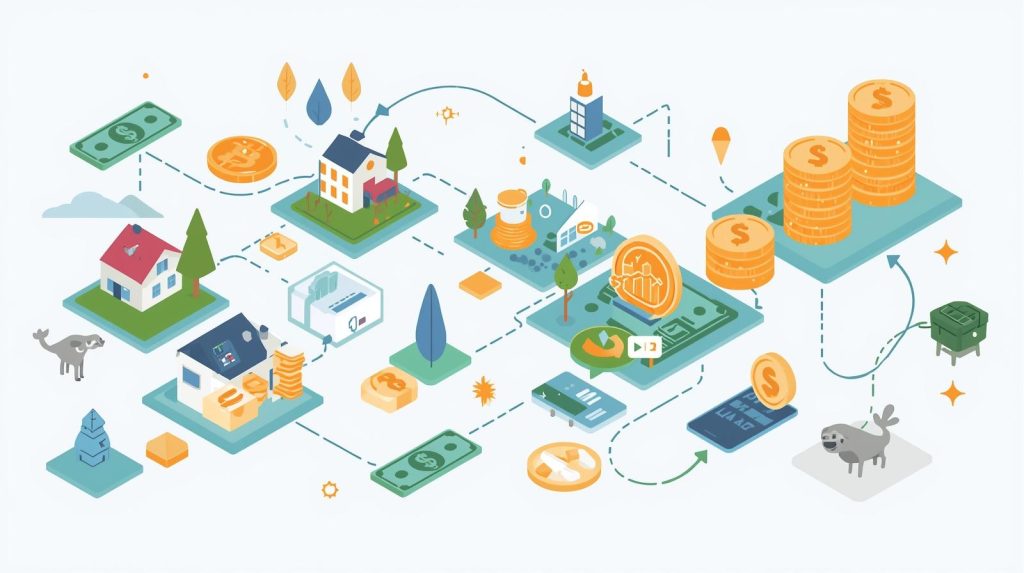
Why Alternative Assets Matter for Everyday Investors
For decades, alternative assets were considered the playground of the wealthy and institutions—hedge funds, private equity firms, and high-net-worth individuals. But in recent years, technology and fintech platforms have broken down barriers, allowing retail investors to access alternatives with as little as $100.
These opportunities open the door to investments that go beyond traditional stocks and bonds, offering diversification and exposure to unique markets that can behave differently during economic cycles.
Understanding Alternative Assets
What Are Alternative Assets?
Alternative assets are investments outside of the traditional categories of stocks, bonds, and cash. They can include real estate, commodities, collectibles, private credit, and even digital assets.
How They Differ from Stocks and Bonds
While stocks represent ownership in companies and bonds represent debt, alternative assets are often tied to tangible resources, real property, or niche financial markets. Their value may be less correlated with traditional markets, providing diversification benefits.
Types of Alternative Assets You Can Start With $100
Fractional Real Estate Platforms
Traditionally, real estate investing required thousands of dollars for down payments. Today, fintech platforms allow investors to buy fractional shares of rental properties or commercial buildings. With as little as $100, you can participate in real estate income streams without owning physical property. Platforms like Fundrise or RealtyMogul make this accessible.
Farmland Investing Apps
Farmland has historically provided stable, inflation-resistant returns. In the past, only wealthy landowners could benefit. Now, apps like AcreTrader and FarmTogether let investors buy fractional interests in farmland. Even a small stake can expose you to long-term agricultural value growth.
Carbon Credits and Environmental Assets
As sustainability becomes a global priority, carbon credits are emerging as a new type of asset. Some platforms allow retail investors to participate in carbon markets with small amounts of capital. These credits represent the right to emit a certain amount of carbon and may appreciate as governments tighten environmental regulations.
Collectibles and Digital Assets
Collectibles—such as rare sneakers, watches, or sports cards—have become investable through fractional platforms like Rally or Otis. Similarly, digital assets, including NFTs or tokenized art, allow investors to own fractions of high-value pieces. These markets are riskier but can offer outsized returns.
Benefits of Investing in Alternatives
Diversification
Alternative assets often move differently than traditional markets, reducing overall portfolio volatility.
Inflation Hedge
Assets like real estate, farmland, and commodities often hold value or even appreciate during inflationary periods.
Access to Unique Markets
With just $100, investors can now enter markets that were once exclusive to institutions—whether it’s farmland, art, or digital assets.
Risks and Limitations to Consider
- Liquidity issues: Many alternative assets cannot be sold as quickly as stocks.
- Lack of regulation: New markets like NFTs or carbon credits may lack oversight, increasing risk.
- Volatility: Collectibles and digital assets can swing wildly in value.
- Platform reliability: Because investments often go through fintech apps, investors must trust the platform’s stability.
Practical Tips to Get Started with $100
- Start small and experiment—use $100 as a test to learn.
- Choose platforms with transparent fees—hidden costs can erode returns.
- Diversify within alternatives—don’t put all $100 into one sneaker or one NFT.
- Integrate with your broader portfolio—alternatives should complement, not replace, stocks and bonds.
Building a Smarter Portfolio with Alternatives
Alternative assets are no longer out of reach for everyday investors. With just $100, you can participate in markets that were once restricted to institutions. The key is to approach alternatives as a way to diversify, hedge risk, and enhance long-term growth, rather than chasing short-term hype.
Used wisely, these small investments can grow into a meaningful part of your portfolio and provide exposure to the future of investing.
Leave a Reply